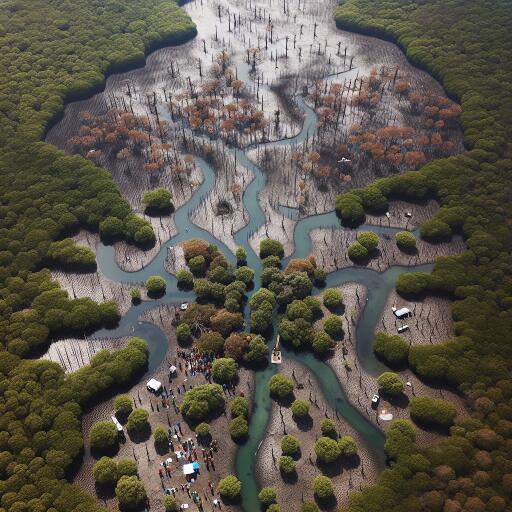
Surveys Find Severe Mangrove Damage, Key Restoration Sites
In a groundbreaking study concerning the ecological health of mangroves along the Great Barrier Reef, researchers have uncovered alarming levels of damage, affecting approximately 80% of the mangrove population stretching from Cairns to Gladstone. This exhaustive study has also identified 52 potential hotspots for restoration, covering an expanse of 17,255 hectares, marking a crucial step towards ecological recovery and conservation efforts.
World Mangrove Day brings with it a mix of hope and a sense of urgency, underlined by the recent findings. Utilizing over 80,000 high-resolution, geo-referenced photographs obtained via helicopter surveys, the extent of the mangroves’ plight has been laid bare, showcasing the detrimental impacts of rising sea levels, cyclones, and pollutants on these vital habitats.
The study, sponsored through the Reef Aid program of Greening Australia as part of the Blue Carbon Initiative, reveals the first comprehensive survey of its kind along the Great Barrier Reef’s coastline. The mangroves’ conditions are a testament to the severe alterations happening along these dynamic shorelines.
Observations from the survey have shown the visible retreat of mangroves into the sea due to sea level rise, alongside the destructive aftermath of tropical cyclones, such as those in 2011 and 2017, which have left a mark on the region. These events, combined with erosion and other environmental stressors, present evidence of the ongoing battle with rising sea levels.
Mangroves serve an integral role in the environment, functioning as blue carbon powerhouses by capturing and storing large amounts of carbon dioxide, thus playing a significant part in combatting climate change. These ecosystems not only bolster biodiversity and provide vital breeding grounds for marine life but also contribute to stabilizing coastlines and reducing erosion.
The identification of 17,255 hectares across 52 potential restoration sites offers a glimmer of hope and a roadmap for future recovery efforts. These findings illuminate the potential for localized recovery, carbon sequestration, and the ability to adapt to coastline retreat, which are critical in the face of sea level rise.
The process of identifying these restoration sites involved a multifaceted approach, utilizing advanced methods such as detailed digital elevation models, tidal ingress mapping, and satellite monitoring of mangrove health. This comprehensive strategy also considered land ownership and regulatory aspects, assessing the potential risks and challenges specific to each site, including pollution, sediment deposition, and storm damage.
Acting on these findings, Greening Australia has taken the initiative to evaluate the potential for blue carbon ecosystem restoration within two specific regions, leveraging this invaluable data for conservation efforts. The restoration of these blue carbon ecosystems is not only vital for climate resilience and biodiversity but holds deep cultural significance for First Nations communities, marking a collaborative path forward in preserving these precious coastal environments.
Through active revegetation and managing tidal inundation, these systems have shown the potential for rapid response and significant carbon storage, highlighting the urgent need for increased investment in coastal restoration activities. As the world faces the escalating challenges of climate change, the restoration and conservation of mangrove ecosystems stand as a beacon of hope and action towards a more resilient and biodiverse planet.





Leave a Reply